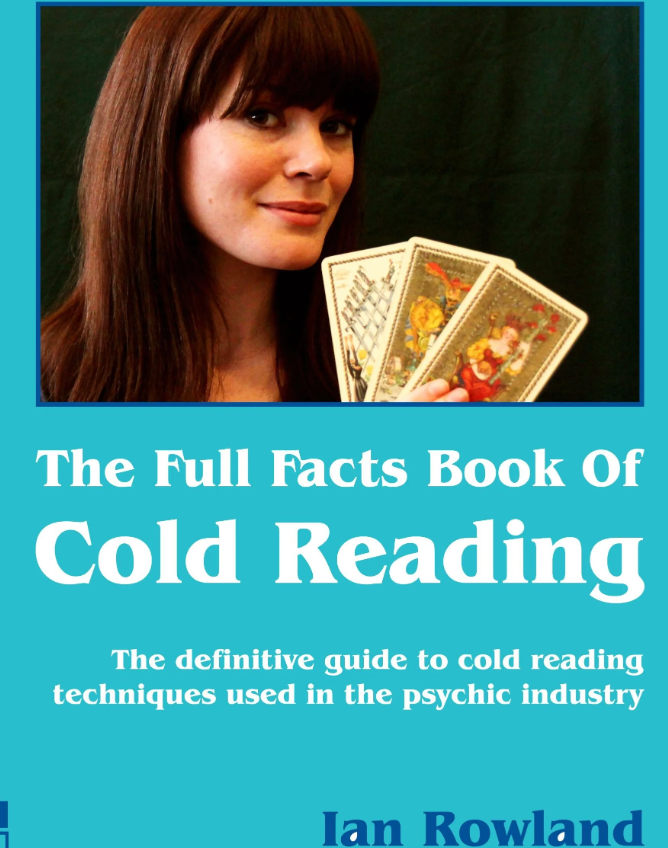Cold Reading Techniques: The Secret Skill Behind Influence, Rapport, and Connection
Cold Reading Techniques: The Secret Skill Behind Influence, Rapport, and Connection
What do fortune tellers, charismatic salespeople, and world-class negotiators have in common? They all use cold reading techniques.
At its heart, cold reading is the ability to talk to someone you don’t know and quickly make statements that feel personal, insightful, and accurate. While most people associate it with psychics and tarot readers, cold reading techniques are actually powerful tools of communication and persuasion. In business, sales, coaching, and even everyday conversations, they can help you build trust and create instant rapport.
In this article, we’ll explore what cold reading techniques are, why they work, and how you can use them ethically to become a sharper communicator.
What Are Cold Reading Techniques?
Put simply, cold reading techniques are methods of making observations and statements that sound highly specific but are actually general enough to apply to many people. These methods rely on human psychology: our tendency to interpret vague statements in ways that feel personally meaningful.
A psychic might say, “You sometimes doubt yourself, even though you know you’re capable.” The client nods, convinced this is a unique insight. In truth, this statement applies to almost everyone.
When used with honesty, cold reading techniques aren’t about deception. They’re about making people feel understood and connected.
Why Cold Reading Works
Cold reading techniques work because people are wired to seek patterns, find meaning, and connect dots. When we hear a statement that resonates with us, we unconsciously filter out the misses and remember the hits.
It’s not about tricking people—it’s about aligning with the natural way the human mind processes information.
Practical Cold Reading Techniques You Can Use
Here are ten of the most effective cold reading techniques you can learn and apply:
The Barnum Statement
A classic of cold reading: a vague but flattering generalisation. Example: “You’re independent, but you also value close relationships.”The Rainbow Ruse
Giving someone a trait and its opposite, so you can’t lose. Example: “You can be outgoing at times, but you also enjoy quiet reflection.”The Jacques Statement
Suggesting someone was different in the past than they are today. People naturally agree. Example: “You’ve become more confident over the years.”Sugar Lumps
Small, complimentary statements sprinkled throughout the conversation. They keep the other person engaged and positive.The Fuzzy Fact
A statement about common but easily forgotten experiences. Example: “You sometimes lose things, only to find them in the last place you’d expect.”The Lucky Guess
Using probability. Example: “I sense an important change in your career or home life within the last two years.”The Push Statement
You offer a guess, then adjust based on feedback. Example: “I see a connection with the name John… or perhaps James?”The Sherlock Strategy
Making deductions based on observation. For example, someone with paint on their hands probably does DIY or creative work.The Vanishing Negative
A denial disguised as a statement. Example: “You’re not the type of person who tolerates dishonesty.”Self-Fulfilling Predictions
Suggesting something that people make true once they believe it. Example: “You’ll soon find new energy and motivation in your work.”
Each of these cold reading techniques gives you a way to sound insightful, while also deepening the connection with the person in front of you.
Cold Reading Techniques Beyond Psychics
While fortune tellers popularised them, cold reading techniques are not confined to the psychic world. They are useful in:
Business: Building rapport with clients and colleagues.
Sales: Creating trust and making prospects feel understood.
Coaching: Helping clients articulate their own insights.
Dating: Establishing quick and genuine connections.
Used ethically, cold reading techniques are really just advanced communication skills. They help you listen, phrase your words carefully, and connect on a deeper level.
How to Practise Cold Reading Techniques
Like any skill, cold reading techniques improve with practice. Try these steps:
Listen more carefully – People reveal much about themselves without realising it.
Start general, go specific – Begin with broad statements, then refine as you learn more.
Watch feedback – Notice body language, nods, or verbal confirmations.
Keep it positive – People respond better to affirming insights.
The more you use cold reading techniques, the more natural they feel.
The Ethical Dimension
A word of caution. Cold reading techniques can be misused to manipulate or exploit. That’s not what this article is about. The real power of cold reading techniques lies in empathy, connection, and communication.
Used wisely, they don’t trick people they help people feel seen, valued, and understood.
Cold reading techniques are not magic. They are not supernatural. They are human. They draw on psychology, probability, and communication skills to create connection. Whether you’re in business, relationships, or personal development, learning these techniques can transform how you interact with others.
So next time you want to make an impression, build trust, or simply connect on a deeper level, remember the quiet power of cold reading techniques.





